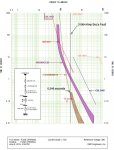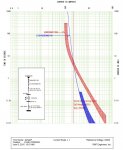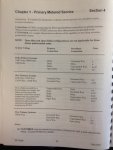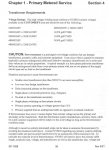kentirwin
Senior Member
- Location
- Norfolk, VA
We have a 1500kva utility transformer that feeds the facility where I work. I have the transformer data supplied by the utility. My problem is that I can find no data for the primary fusing as far as opening time should there be a bolted fault on the secondary. Below is the data from the utility, Dominion Virginia Power.
The transformer is a 1500kVA, Deadfront, connected Grounded Wye / Grounded Wye. The primary voltage is
34.5kV, (Phase to Phase) and the secondary voltage is 277/480V, (Phase to Phase).
The transformer is fused on the primary side with a Load Sensing fuse (50 AMP COOPER 4000358C12B) in series
with a BCL fuse (COOPER 2-3545080M51M)
Re: Request for Impedance Information
R1 = 0.0486 per unit @ 100 MVA
R0 = 0.1170 per unit @ 100 MVA
X1 = 0.2996 per unit @ 100 MVA
X0 = 0.2612 per unit @ 100 MVA
The current source impedance on the source side of the transformer is:
The transformer impedances are:
Max Z = 6.18% Max X = 5.95% Max R = 0.71%
Min Z = 5.37% Min X = 5.34% Min R = 0.58%
This information is based on Dominion's records for the transformer mapped to this service and does not include any
secondary impedance.
Max available fault current is 37517 amperes.
Maybe some utility veteran could weigh in on the possible primary fuse opening time should a bolted fault occur on the secondary ahead of the main in the service switchgear which is 150' from the transformer. I myself have no experience with this kind of thing. I'd appreciate any kind of insight.
The transformer is a 1500kVA, Deadfront, connected Grounded Wye / Grounded Wye. The primary voltage is
34.5kV, (Phase to Phase) and the secondary voltage is 277/480V, (Phase to Phase).
The transformer is fused on the primary side with a Load Sensing fuse (50 AMP COOPER 4000358C12B) in series
with a BCL fuse (COOPER 2-3545080M51M)
Re: Request for Impedance Information
R1 = 0.0486 per unit @ 100 MVA
R0 = 0.1170 per unit @ 100 MVA
X1 = 0.2996 per unit @ 100 MVA
X0 = 0.2612 per unit @ 100 MVA
The current source impedance on the source side of the transformer is:
The transformer impedances are:
Max Z = 6.18% Max X = 5.95% Max R = 0.71%
Min Z = 5.37% Min X = 5.34% Min R = 0.58%
This information is based on Dominion's records for the transformer mapped to this service and does not include any
secondary impedance.
Max available fault current is 37517 amperes.
Maybe some utility veteran could weigh in on the possible primary fuse opening time should a bolted fault occur on the secondary ahead of the main in the service switchgear which is 150' from the transformer. I myself have no experience with this kind of thing. I'd appreciate any kind of insight.





